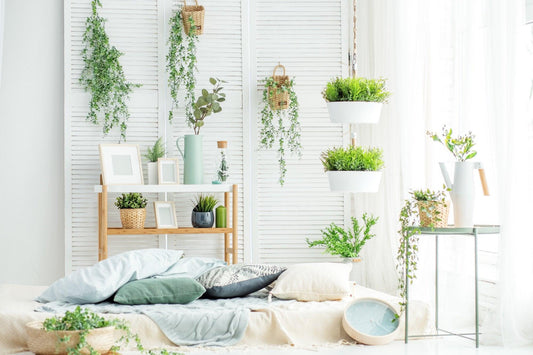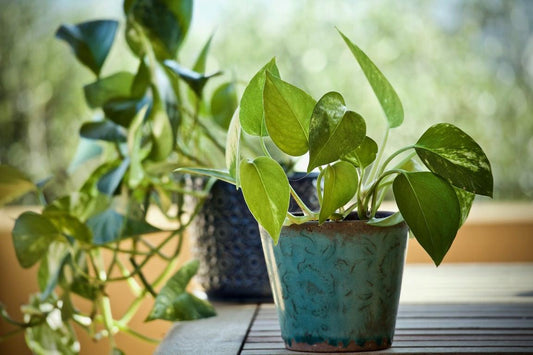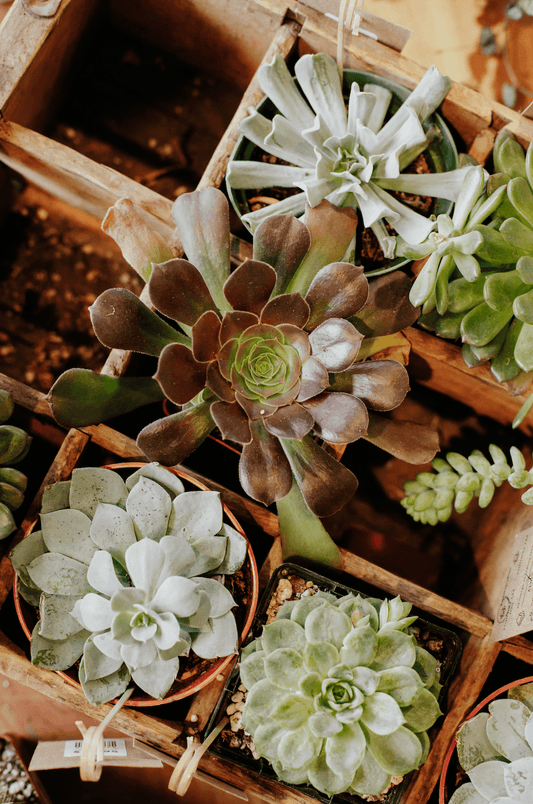Houseplant owners spend an average of $75 a year on their plants. If this sounds low to you, you're not alone - finding your green thumb costs a lot of time and effort.
Regardless of how long it's taken, you've finally nailed it, and your houseplants are thriving—or so you thought.
You've noticed white spots on plant leaves, and you're not sure what they are. All you know is that they need to go pronto, so your prized plants stay pristine.
Read on to see what the culprits can be and how you can fix the situation.
Mealybugs
Mealybugs are a type of pest that's common in houseplants. You might have mealybugs if the white spots you're noticing are thick and cotton-like. Look carefully on your plants, especially in the crevices.
In addition to that cotton-like wax, you'll also spot small, fat bugs that are about 1/5th of an inch long. They look similar to roly-poly bugs, or pill bugs, but they're white and have white protrusions all around their bodies.
Thankfully, if you've spotted mealybugs, they're very easy to take care of; you can simply pick them off.
To really make sure they're gone, you can dip a Q-tip in rubbing alcohol, then rub it over all the white spots. However, test a small patch first, as many plants are sensitive to rubbing alcohol and can become damaged. In most cases though, it'll just be minor ugly spots.
You can also use green lacewings, which are predatory bugs that'll eat the mealybugs. It's a fantastic pest control method that's natural and sustainable too!
Spider Mites
Another pest you might have is spider mites. These will appear as tiny white dots, and typically, you won't find them on top of your plant leaves either. Instead, you'll see spider mites on leaf undersides.
Plus, you'll find thin and intricate webs that they've spun. They'll look much more delicate than webs from regular spiders.
Be aware that calatheas tend to be spider mite magnets. So if you've got any, keep an eye out.
To eliminate spider mites, you can wipe down your houseplants' leaves with a soft wet cloth. You can give them a quick rinse in the shower too. Not only does this knock off the spider mites, but it also keeps them away since they don't like high humidity.
Another option is green lacewings, as they'll eat not only mealybugs, but also spider mites. For something stronger in combination with predatory bugs, use a bio insecticide. It'll kill pests while remaining harmless to the beneficial insects.
Sunburn
A less sinister reason why your plants have white spots is that they're sunburnt.
Remember how as a kid, you'd hold a magnifying glass under the sunlight, and it'd burn a hole in whatever's underneath? The same can happen with your houseplants, especially if they're not used to being in direct sunlight.
To prevent your plants from being sunburnt, you'll want to slowly adjust them form low-light conditions to direct sunlight. Start off with 1 hour a day, then 2, 3, etc.
You'll also want to read up on where your houseplants are from and where they thrive. For example, calatheas are tropical plants found in shady areas, so they should never be under direct sunlight.
Mineral Buildup
Another innocent reason why you're seeing white spots on your plants is that there's mineral buildup. This can happen if you live somewhere with hard water and you give your houseplants tap water, or you use too much fertilizer.
You may have to switch to filtered water to stop white spots from happening. You should also ensure you're using fertilizers as instructed, and not excessively.
Fungal or Bacterial Infection
Just like with humans, plants can get fungal and bacterial infections. There are several types, but many present as white spots.
No matter which type of fungal or bacterial infection your plant has, it'll indicate that the conditions are too wet. This might be from overwatering, although it's indicative of poor drainage and/or high humidity too.
At the first sign of infection, remove all affected parts before they can spread. You should also apply bio fungicide to control and suppress infections.
How to Prevent White Spots
It's essential to know what causes white spots on plant leaves and how to treat them. But it's even more important to know how to prevent them. That way, you won't have to go through this issue over and over again.
In general, it's best to check the soil to determine when your houseplants need water and avoid under- or overwatering. For more sensitive plants, stick to filtered water too, and flush occasionally to eliminate fertilizer buildup.
You should also keep plants out of bright direct sunlight for long periods of time, unless that's what they require. Ensure that the air circulation is good and that the rooms aren't too humid.
Checking your plants for pests once or twice a week is ideal, as is giving them a shower. This can knock off any pests and also keep the leaves dust-free, which will help them photosynthesize better. The healthier houseplants are, the better they can fight off pests.
Take Care of White Spots on Plant Leaves
White spots on plant leaves can give you cause for concern. But as you can see, there are several reasons why you might see them, ranging from pests and infections to sunburns and mineral buildup.
Knowing the causes is vital to treating your houseplants in the correct way. Otherwise, you might be unnecessarily stressed out, and you can cause more harm than good too.
Need some plant care supplies? Then browse our selection now.




